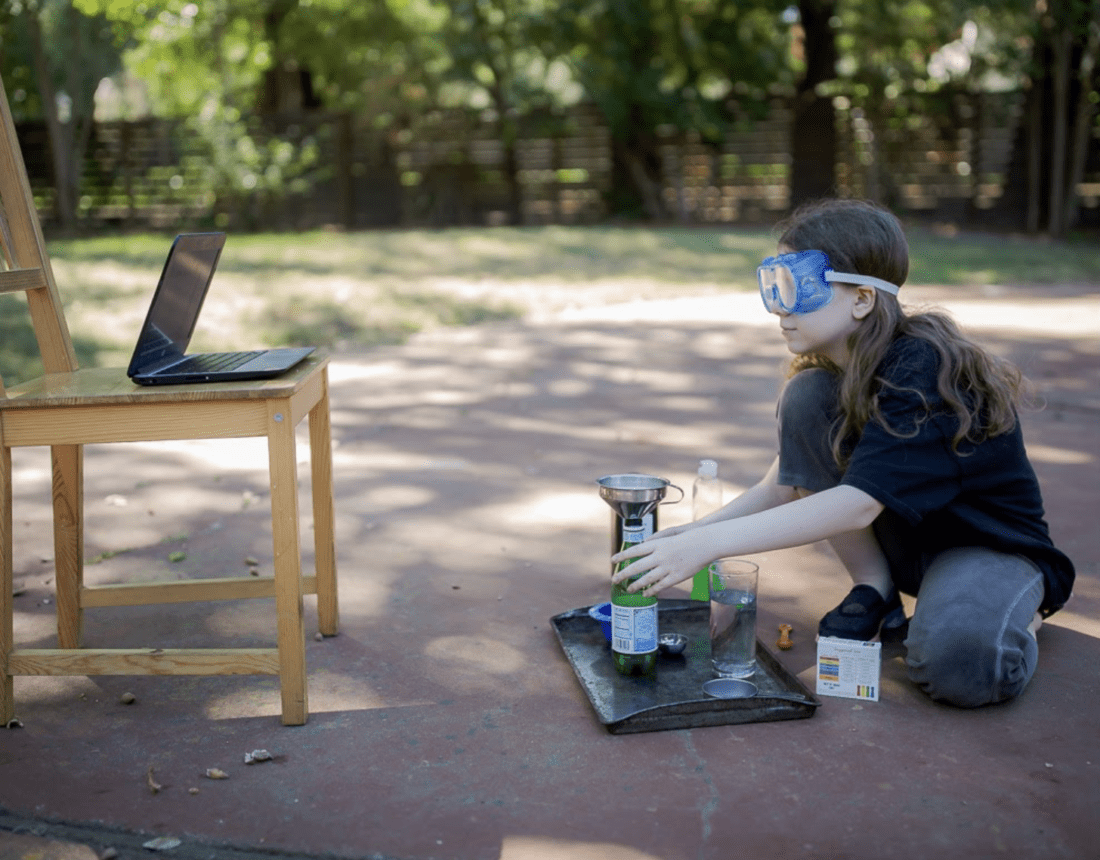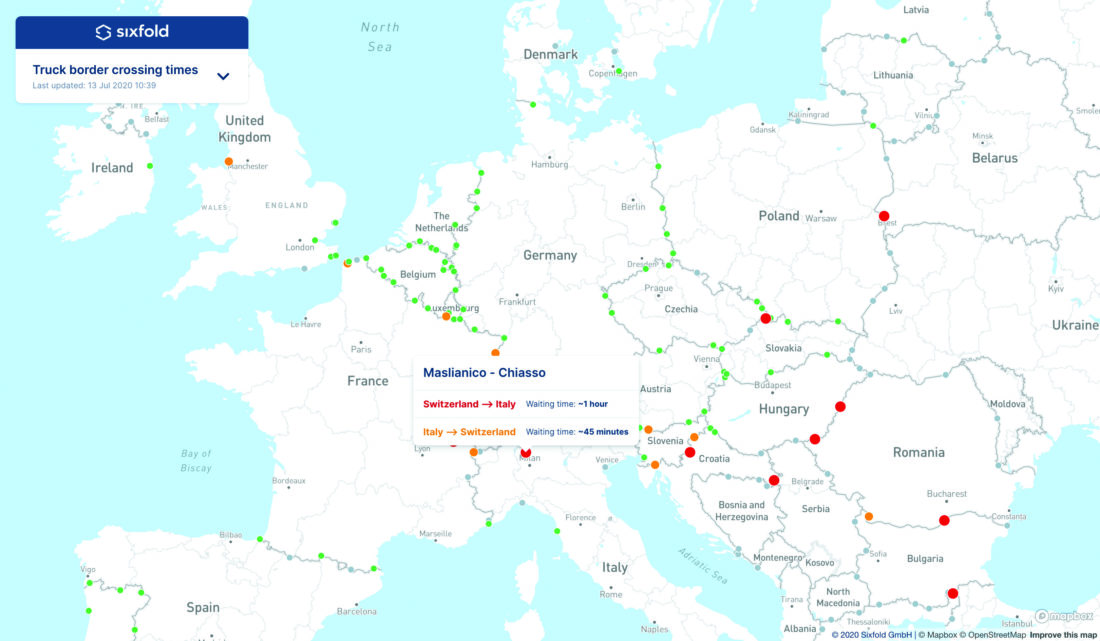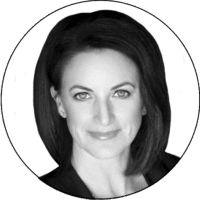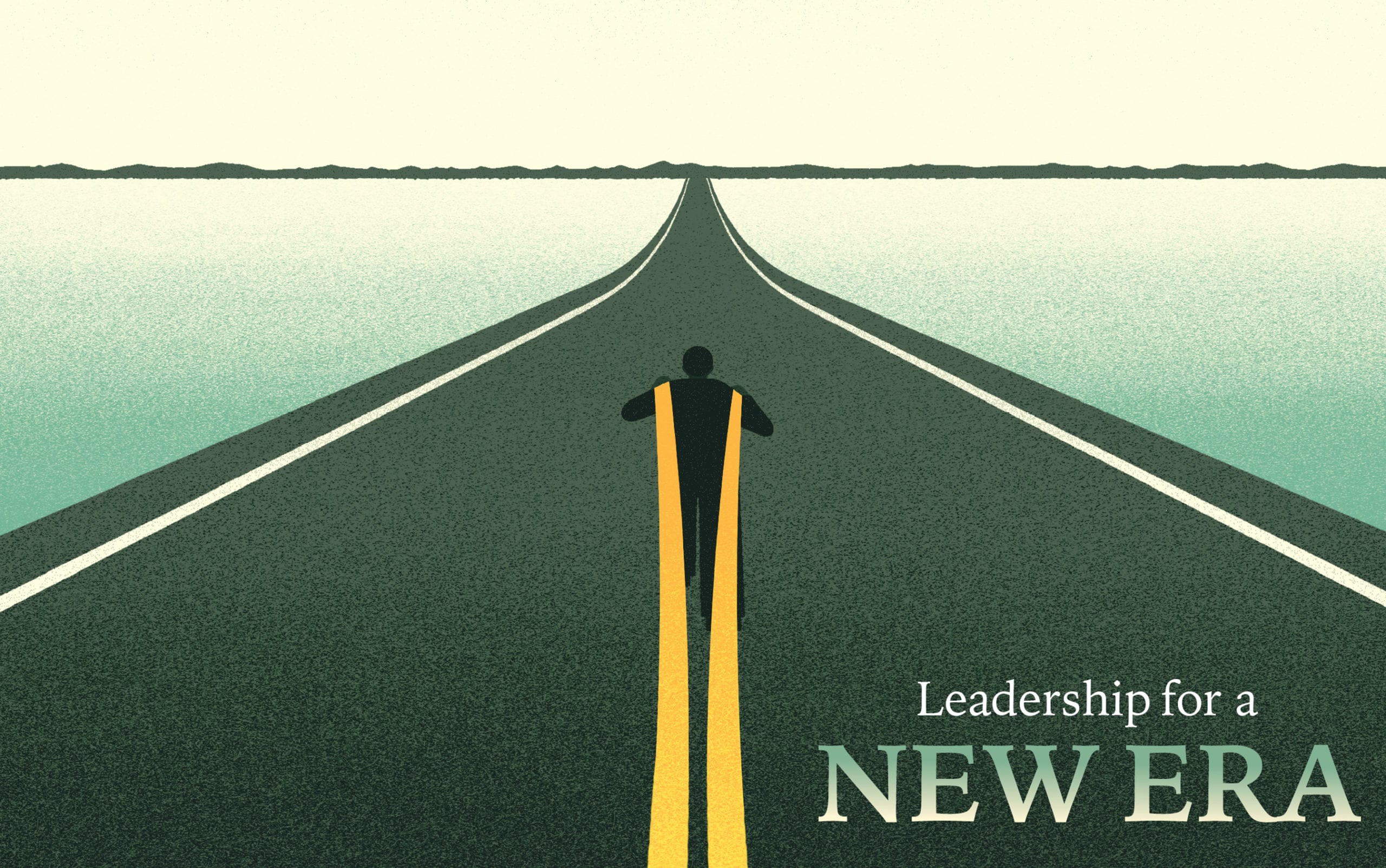Haas alumni shine amid our changing world
This year, the world changed almost instantly. A deadly pandemic, vigorous racial justice movement, and widespread economic devastation have turned the world upside down, leaving in their wake suffering and turmoil for many.
These crises have put businesses front and center as leaders grapple with the unprecedented challenges, new prospects, and questions that we, as a society, now face. “Companies are adjusting their operations and core business models in ways and at a pace no one could have expected,” says Jonathan Kolstad, a Haas associate professor of economic policy and analysis who holds the Egon & Joan Von Kaschnitz Distinguished Professorship. “It’s requiring massive innovation and, frankly, a massive rethinking of what business leadership is.”
Many Berkeley Haas alumni are driving the path forward into the unknown. Here, we tell the stories of five of them—of pivots they made out of necessity or a desire to help, of their confidence and humility, and of lessons learned. Most of all, they have shown determination to go beyond themselves, reminding us once again of the power of our Defining Leadership Principles in good times and bad.
On the right side of the opportunity line

For Chris Becherer, MBA 06, everything shifted when he saw his customer’s Facebook post. A Finnish software executive wrote about waking up feeling fine. But his sleep-tracker—a finger ring developed by Becherer’s employer, Oura Health—told him otherwise. His heart and respiratory rates were up as was his temperature. Because he’d recently traveled near a COVID-19 hotspot, he got tested. The results were positive.
“The world changed for us when we saw that post,” recalls Becherer. The customer’s story wasn’t the first time that he had heard anecdotally that the $300 Oura Ring—dubbed “Silicon Valley’s favorite sleep tracker” by Business Insider— picked up signs of illness before telltale symptoms appeared. Unlike most wearables, including Fitbit and Apple Watch, the Oura Ring measures body temperature. As the gravity of COVID-19 set in, Becherer and his colleagues realized they were in a unique position to help.
Alongside the University of California, San Francisco and West Virginia University’s Rockefeller Neuroscience Institute, Oura donated rings to thousands of healthcare workers as part of new research studies, contributing to a growing body of research on how wearables can help with illness detection, symptom profiles, and recovery. This research even caught the eye of the NBA, which gave its players the option of wearing Oura Rings for the season restart this summer. 
Oura’s early success in the COVID-19 era is an example of how adaptable and resilient companies can be in times of crisis, says Haas Professor Steven Tadelis, the Sarin Chair in Leadership and Strategy. “Businesses that are data savvy are the ones that are going to recover faster and expand in smarter ways,” he says.
For Becherer, Oura’s pivot raises important questions. “We need to make sure we are helping and pivoting in the right way without being opportunistic,” he says. “That’s a delicate balance for any business that’s doing well right now. We asked ourselves if we were going too far and the answer was no, we are on the right side of the opportunity line here.”
Now, Becherer and his colleagues are grappling with another question: Just how much should they pivot in response? Oura has built its reputation as a sleep and wellness company, not a health care provider. “The knee-jerk reaction would be to arc the business roadmap to the new world,” he says. “We are focused on a longer time horizon. Even though the world looks drastically different right now, it could look drastically different again.”
From strategic thinking to operations 101
 Hand sanitizer appeared throughout the office of video game developer Glu Mobile, where Laura Teclemariam, EMBA 18, worked. Over Slack and in casual conversations, employees were questioning what COVID-19 might mean for them and the company. Some were Clearly nervous, while others seemed apathetic.
Hand sanitizer appeared throughout the office of video game developer Glu Mobile, where Laura Teclemariam, EMBA 18, worked. Over Slack and in casual conversations, employees were questioning what COVID-19 might mean for them and the company. Some were Clearly nervous, while others seemed apathetic.
This wasn’t the time for work to slow down. Glu was three weeks away from releasing two new games—one of which, Disney Sorcerer’s Arena, Teclemariam led as director of product management—and she needed to make sure workers were collaborating and thinking creatively about future iterations.
With signs mounting that employees might soon be working from home, Teclemariam started a spreadsheet. She worked with her co-team leads noting who needed laptops, Wi-Fi routers, or other teleworking tools. She analyzed employees’ productivity risks, either work-related or personal due to family demands. Finally, she assessed whether they were in the “fear,” “learning,” or “growth” zone of emotional responses to the unfolding crisis.
When the company order came down to work from home, Teclemariam shifted into hyperdrive. “I went from thinking strategically about game design and ideation to operations 101,” she says. “I was very aware of the potential challenges we faced around communication and collaboration.” She faced her own hurdles on that front: with three young children, her days began at 4 a.m. and ended at 10 p.m. as she and her husband juggled work and family needs.
Teclemariam’s foresight was spot on. “We are in a monitoring and risk-management world,” says Prof. Kolstad. As workforces become more remote, employers will have to assess the psychological state of their teams in ways they never had to before. In physical workplaces, daily health-risk assessments could become the new normal.
“As a mother and as a leader, I will unapologetically support anyone who needs the flexibility of working from home.”
Teclemariam also had to ensure that employees could work efficiently and collaboratively. The release of the new games not only went off without a hitch, they also achieved higher-than-expected engagement levels as homebound consumers sought entertainment.
Success, however, brought new concerns. The prospect that users might disengage meant updating the games at a faster rate than expected and also adding new features that prioritized user engagement over revenues. Since they could no longer brainstorm in front of a whiteboard, Teclemariam had workers devise more fully baked ideas in smaller groups. They began working together in virtual rooms for an hour or two a day. She instituted deadlines for minor tasks.
Teclemariam says the challenges of juggling work and personal demands has changed her as a leader. “Concerns about working from home have been demystified,” says Teclemariam, who left Glu Mobile in May to become a director of product management in Warner Bros. Entertainment’s gaming division. “As a mother and as a leader, I will unapologetically support anyone who needs the flexibility of working from home.”

Prioritizing future goals today
 As the pandemic began overtaking the country, Tom Stahl, MBA 93, knew that schools might close. Outschool, the online education company where he serves as head of operations, began preparing for increased enrollments and started hosting free webinars to prospective teachers. Almost overnight, teacher attendance at the webinars surged from one to about 500.
As the pandemic began overtaking the country, Tom Stahl, MBA 93, knew that schools might close. Outschool, the online education company where he serves as head of operations, began preparing for increased enrollments and started hosting free webinars to prospective teachers. Almost overnight, teacher attendance at the webinars surged from one to about 500.
Formed in 2015, Outschool provides a marketplace for teachers to offer live courses to kids and teens. Anyone who passes a criminal background check can sign up to teach a class of their choosing at their own price. The platform had about 65,000 enrolled students, many of them homeschooled, on the pandemic’s eve.
Outschool also offered and, ultimately, donated $1 million worth of free classes to anyone whose school had shuttered. Within hours of the giveaway’s launch on March 13, when schools announced widespread closures, Outschool’s traffic spiked and the website briefly crashed. By month’s end, an additional 20,000 students had enrolled.
To handle the influx, Outschool upended its org chart to redeploy employees. “Within 48 to 72 hours, virtually every business metric—sales, bookings, sign-ups, student engagement, website visits—grew by a factor of 10,” he says. “We had to throw our annual plan out the window.” He also made sure employees received significant cash bonuses for their monumental effort.
By June, Outschool had hired 19 full-time employees over Zoom and brought in some 80 contractors. Some 154,000 students were active on the platform.
Sean Foote, a longtime Haas lecturer, says online education’s coming-of-age moment epitomizes how crises accelerate disruption. “Sharp shocks like COVID-19 are just force multipliers for trends that were already happening,” he says. Foote is the founder of Transform Capital and teaches venture capital and private equity.
For Outschool, surging demand meant long-term goals rose to the top of the to-do list. Efforts to recruit thousands of new teachers from across the English-speaking world ramped up. The company began working with school districts to offer its platform as a supplement to their educational offerings. It also recruited more than 80 organizations to provide summer camps online.
“We are proving that there are unique advantages to bringing together students and teachers from all over the world in a live setting,” Stahl says.
The unlimited ROI of going Beyond Yourself
 Nearly 6,000 miles and nine time zones away, Wolfgang Wörner, MBA 14, had to navigate a literal traffic jam as CEO & co-founder of Sixfold, an Austria-based provider of real-time and predictive supply chain software. A massive breakdown in Europe’s transportation network left trailers loaded with medical equipment, pasta, and toilet paper idling at borders for 24 hours or more, stuck in lines dozens of miles long. Many of Sixfold’s customers, which include Nestlé and Coca-Cola, were desperate for insights to get cargos moving.
Nearly 6,000 miles and nine time zones away, Wolfgang Wörner, MBA 14, had to navigate a literal traffic jam as CEO & co-founder of Sixfold, an Austria-based provider of real-time and predictive supply chain software. A massive breakdown in Europe’s transportation network left trailers loaded with medical equipment, pasta, and toilet paper idling at borders for 24 hours or more, stuck in lines dozens of miles long. Many of Sixfold’s customers, which include Nestlé and Coca-Cola, were desperate for insights to get cargos moving.
Sixfold had the data they needed. But Europe had been borderless for almost a quarter of a century, which meant there had not been a need to identify widespread bottlenecks and alternate routes at this scale. As Wörner and his team raced through a Red Bull-fueled weekend to pull the data together into a single, real-time virtual map, he made a critical decision that was both humanitarian and smart business: to make the tool available for anyone to use.
“We were just wanting to do our part to get supplies where they needed to be. For us, the silver lining has also been that we were at the right place at the right time.”
When the “COVID-19 map” was released in March, not even Wörner could have foreseen what happened next. Website traffic soared in one day to half a million visitors as suppliers, truckers, central and commercial bankers, the International Monetary Fund, and government agencies used the tool and media outlets like the Wall Street Journal wrote about it. Within two weeks, the European Commission was showcasing the map as part of its daily press briefing on its pandemic response, which included developing a mobile logistics app using Sixfold data. The European Commission president personally thanked Wörner for Sixfold’s contributions.
“We were just wanting to do our part to get supplies where they needed to be,” says Wörner. “For us, the silver lining has also been that we were at the right place at the right time.”
Olaf Groth, a Haas professional faculty member in international business strategy specializing in digital-disruption strategy, describes the pandemic as a “wake-up call” for logistics managers to rely less on human relationships and more on technology. “Supply chains tend to be incredibly fine-tuned and sophisticated,” says Groth, the CEO of Cambrian Futures, an advisory think tank. “But they are also very rigid and very fragile, and the pandemic has exposed those weaknesses.”
Wörner sees the potential payoff. But rejiggering supply chains is hugely expensive, and there’s too much economic uncertainty for companies to invest in better technology in the short run. “We really don’t know how this is going to play out,” says Wörner. “But we’ve proven, without question, the value of real-time data and insights.”

A new chapter in innovation
 In 2019, Johnson & Johnson Innovation–JLABS announced their next site in Washington, DC, along with a public-private partnership with the government agency overseeing U.S. global pandemic preparedness. Together, the Biomedical Advanced Research and Development Authority (BARDA) and JLABS would pursue early stage companies working on medical countermeasures aimed at protecting our nation from chemical, biological, radiological, and nuclear threats, as well as from pandemic influenza and emerging infectious diseases.
In 2019, Johnson & Johnson Innovation–JLABS announced their next site in Washington, DC, along with a public-private partnership with the government agency overseeing U.S. global pandemic preparedness. Together, the Biomedical Advanced Research and Development Authority (BARDA) and JLABS would pursue early stage companies working on medical countermeasures aimed at protecting our nation from chemical, biological, radiological, and nuclear threats, as well as from pandemic influenza and emerging infectious diseases.
Before the pandemic hit, Sally Allain, EMBA 16, a longtime Johnson & Johnson executive, had described as “unmet” the need for innovation in response to what was still a hypothetical threat. Today, Allain is entrenched in the race to innovate in health care. She’s working to fill gaps—in potential solutions for patients as well as the need for venture capital funding—in the nation’s preparedness for health-related catastrophes.
As the head of the new JLABS @ Washington, DC, incubator, Allain is tasked with recruiting up to 50 health care startups with promising innovations—not just in response to COVID-19 but also other underserved areas like pediatric medical devices and pharmaceuticals. Selected entrepreneurs will be mentored by Johnson & Johnson’s experts and supported with back-office services and the JLABS Investor Hub (jlabs.jnjinnovation.com/investor-hub). The JLABS model, however, is “no strings attached.” Johnson & Johnson does not take company equity and companies own their intellectual property. The more than 650 companies that are a part of the JLABS portfolio have independently raised over $33 billion; 31 are publicly traded, and 19 have been acquired.
The pandemic has added to Allain’s mission. She’s now working with her counterparts across 13 global JLABS sites to help portfolio companies take advantage of COVID-19-related funding opportunities through BARDA, the National Capital Consortium for Pediatric Device Innovation, and others. Among other effects, the outbreak has accelerated grant applications and data sharing among all health care players, public and private.
Haas’s Kolstad says public-private collaborations are more critical than ever to the future of health care innovation. “I am optimistic that these kinds of partnerships will lead to good solutions,” he says.
Allain is confident that the collaborations underway could lead to faster and more effective responses to future health crises—and to potential breakthroughs and innovative strides in pediatric care. “With such a rapid pace, there is a window for us to fill long-standing gaps in health care,” Allain says.
